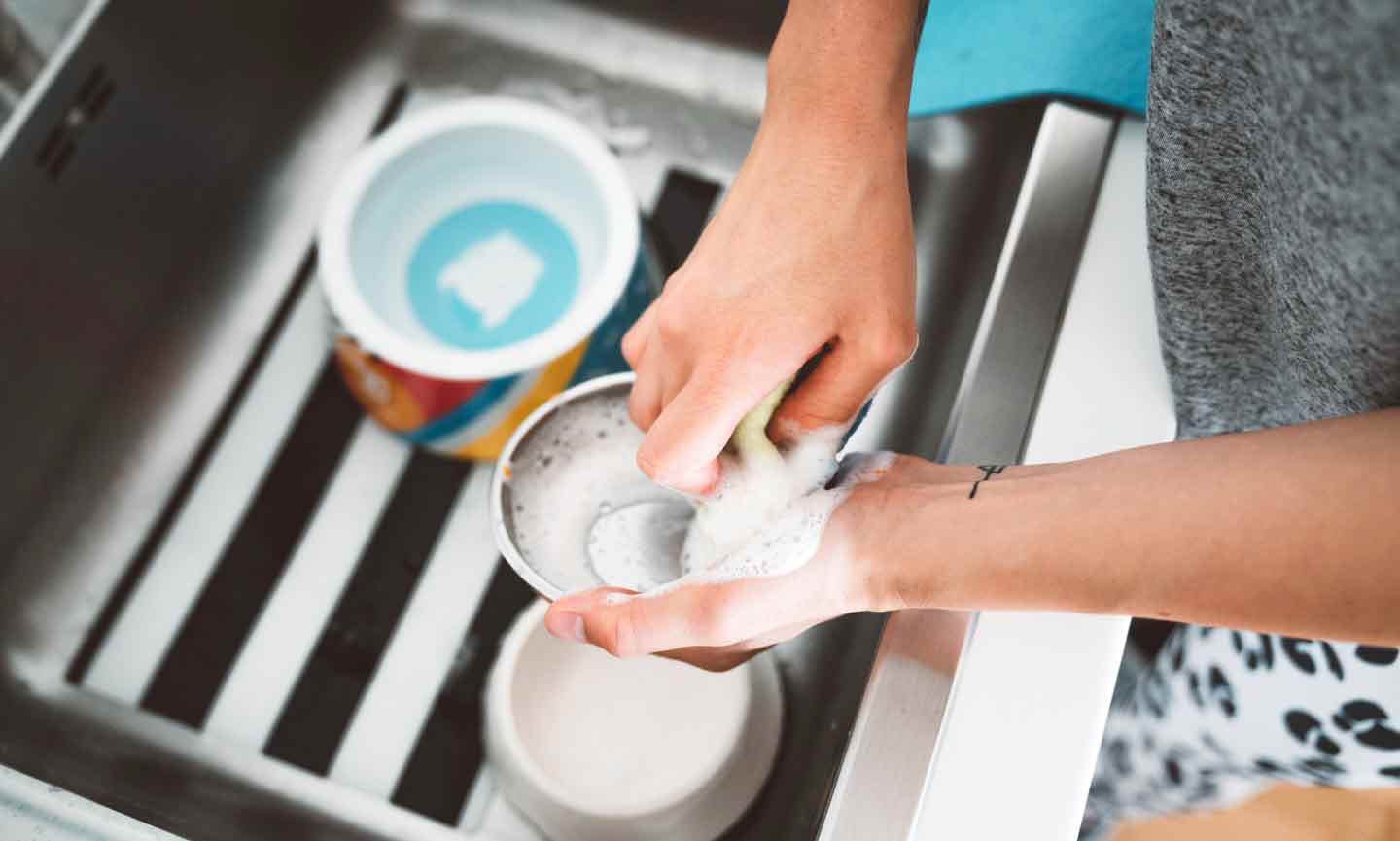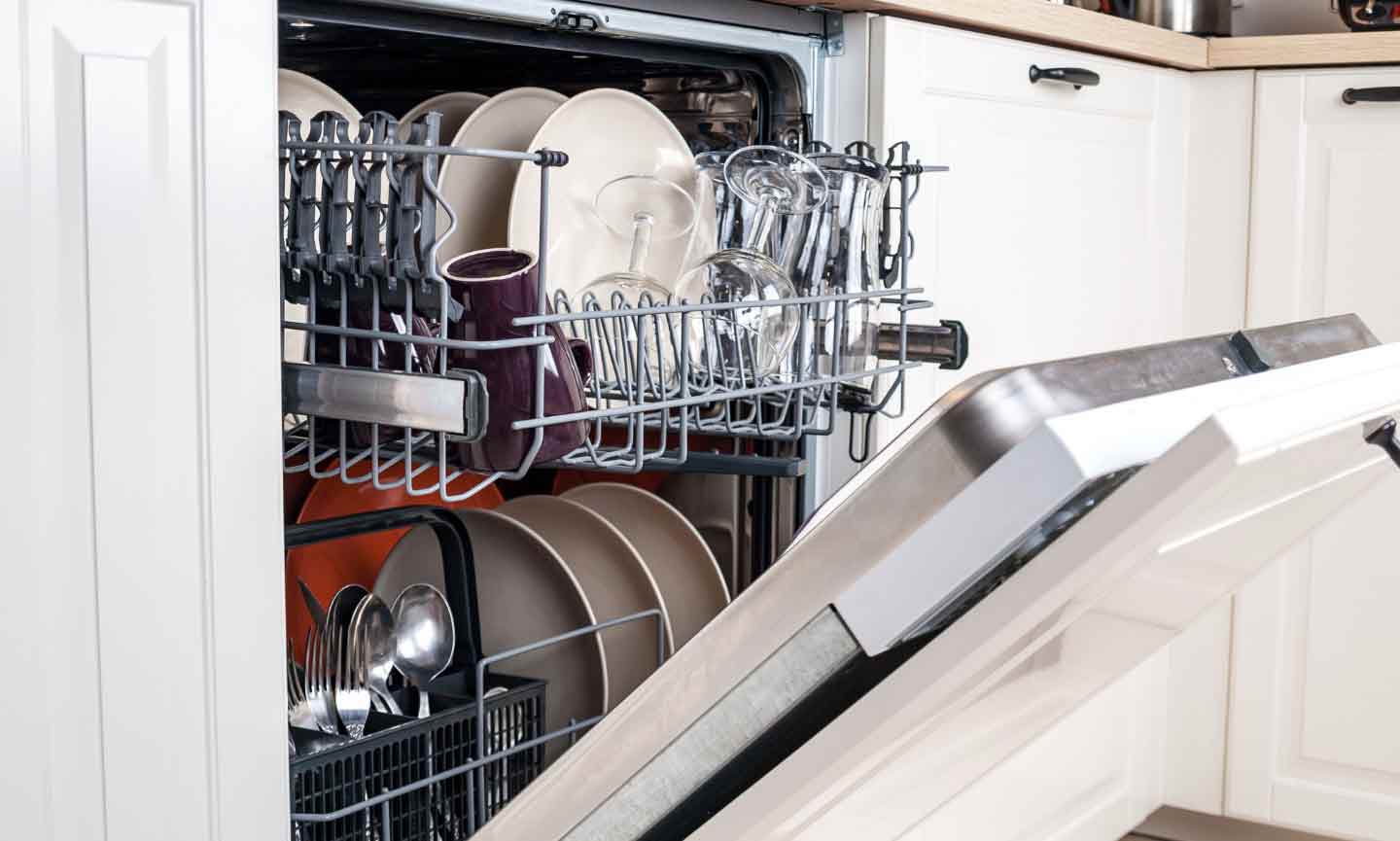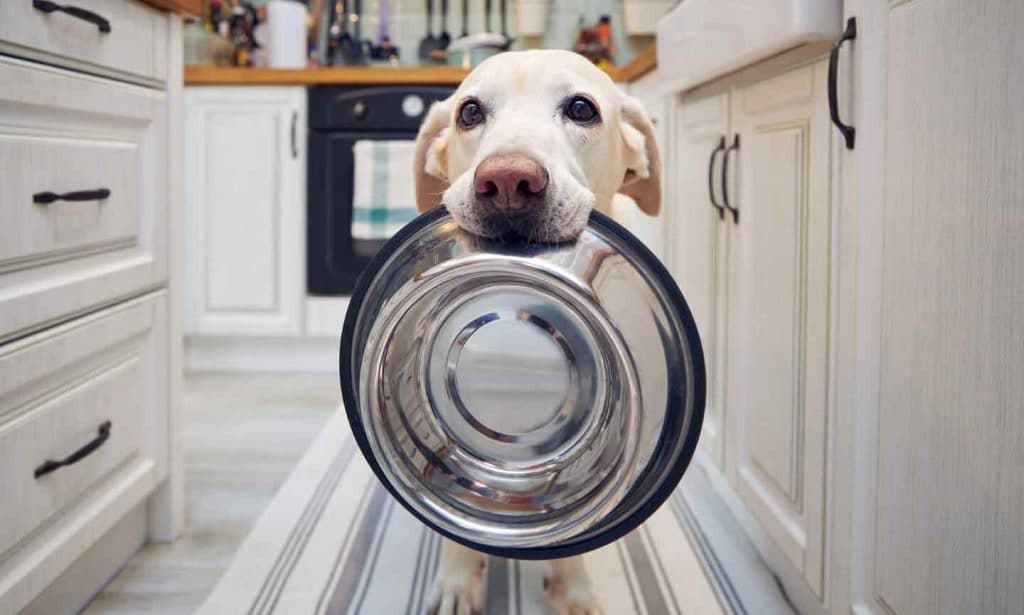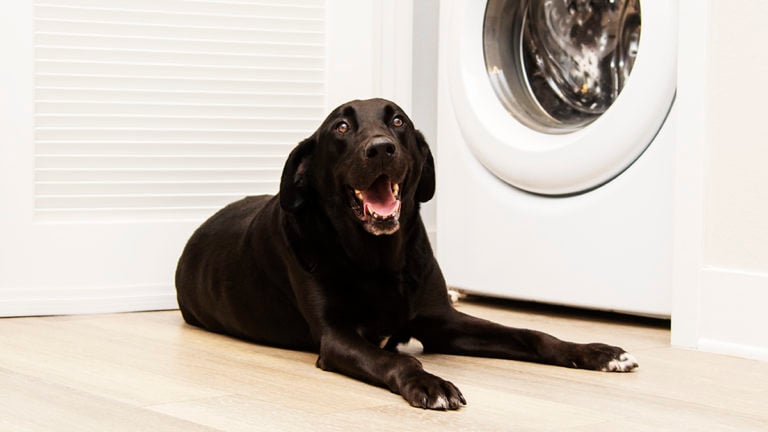In the same way you prefer to eat off a clean plate, your pup prefers a clean dog bowl they can happily eat from—one that doesn’t have a biofilm of the last meal’s slobber or food particles. Not only is eating from squeaky clean food bowls a more enjoyable dining experience for your sweet fluff, but it’s also way more hygienic. Whether your dog eats wet food, dry food or raw food, dog bowls are breeding grounds for bacteria that can ultimately cause your dog to become sick.
So, how can you make sure your dog’s bowl is squeaky clean? We asked veterinarian Katie Malensek, DC, DVM at Ravenwood Veterinary Clinic in Port Orange, Florida, for her tips on battling dog bowl bacteria.
In This Guide
The Risks of Dirty Dog Bowls
You might be thinking, “How much cleaning can my dog’s bowl really need?” The answer: After every use. That’s because leftover dried food particles and saliva contain bacteria that can grow rapidly if not properly cleaned, Dr. Malensek explains.
In fact, the National Sanitation Foundation ranked pet bowls as the fourth most germ-filled item in the home, just after dish sponges, the kitchen sink and toothbrush holders. Bacteria such as salmonella and E. coli are commonly found in dog bowls. Plus, their watering bowls can accrue algae and mold if pet parents don’t take time to clean them routinely.
Along with pet health risks from salmonella and E. coli bacteria, dirty pet bowls can cause painful skin infections around the mouth and chin, notes Dr. Malensek. These appear as tiny pimples or growths. Fortunately, they can be prevented by providing your pet with clean food and water bowls.
If your pet is susceptible to these infections, you may want avoid ceramic or plastic bowls, as they can have porous surfaces or cracks that are harder to keep bacteria-free. Instead, opt for a dishwasher-safe stainless steel bowl like this one from Frisco, which is stain and rust-resistant.

How To Hand Wash Pet Food Bowls
It might be temping to just wipe out your pet’s bowls with a damp cloth or rinse them under warm water, but that’s not going to cut it. To eliminate bacteria, help prevent dog illnesses and keep the rest of your family safe from these unwelcome pathogens, pet dishes need to be cleaned properly.
Fortunately, this chore’s much easier for dog parents compared to some other tasks (like scooping poop)!
Step 1: Discard Old Food
Toss any residual dog food into the trash can. If they eat wet food, you may need to use a cloth to assist with this.
Step 2: Soak
Immerse the bowl into soapy, hot water. You can use the same dish soap you use for human dishes. If necessary, allow the bowls to soak for 10 to 15 minutes to break down any stubborn food particles.
Step 3: Scrub
Using a clean brush or kitchen sponge, break away any particles. For really stubborn spots, use a paste of equal parts baking soda and water to clean and scrub.
Step 4: Dry
Finally, wipe down the bowl with a clean cloth and allow it to air dry the rest of the way.
Step 5: Disinfect (Weekly)
A dog's food bowl should be washed after every meal, and water bowls should be washed daily. However, note that handwashing dog dishes with soapy water might not be enough to completely disinfect these dishes. On a weekly basis, you should properly disinfect both food and water bowls. You can do so by combining 1/2 cup of regular bleach with a gallon of water, then immersing the bowls for 10 minutes before thoroughly rinsing with fresh water and drying.

Cleaning Your Dog’s Bowl in the Dishwasher
If you have a dishwasher, you’re in luck: Washing dog bowls in the dishwasher with your regular detergent is a preferred cleaning method because the heat is effective at killing bacteria, Dr. Malensek says. Make sure you use the highest heat setting, as some types of salmonella can withstand warm or tepid temperatures. For a double dose of disinfecting power, you can soak the dishes in a bleach and water solution for about 10 minutes, then run them through the dishwasher on high heat.
If your dog’s dishes are cleaned regularly, you can wash them in the same load as your other dishes without concern of cross-contamination. However, if the idea of stacking your dog’s bowl next to your casserole dish makes you uncomfortable even if you have healthy pets, run them through by themselves.
One caveat, though: If you’re going to wash your dog’s bowl in the dishwasher, choose a dishwasher-safe bowl. (It sounds obvious, but worth mentioning to avoid melting your pet’s bowl!)
Shop Related Products on Chewy
The Dish on Different Types of Dog Food
Do different types of dog food require different amounts of washing? Not unless you're feeding your dog a raw food diet. Raw foods pose more of a risk for bacteria such as salmonella and E-coli, so these pet food dishes must be properly disinfected after every usage, no exceptions. Again, combine 1/2 cup of bleach with a gallon of water and then let the bowls soak for 10 minutes before rinsing and thoroughly drying.
If your dog eats packaged dry food or wet food, on the other hand, you can simply follow the handwashing or dishwashing instructions above.
More Clean Dog Bowl Tips
Want some extra credit? Along with regular cleaning, take advantage of some of these clean dog bowl tips!
- Use Placemats: Placemats are great for keeping your pet’s bowls in place and keeping their eating area less messy, but they can also be a hotbed for germs. Choose easy-to-clean mats like the Frisco Silicone Dog & Cat Food Mat, which can be washed with soapy water or wiped with a bleach solution and rinsed.
- Properly Store Food: Storing your pet’s food is also an important way to protect healthy pets from food-borne illness. Pests like rats, mice and insects can easily get into kibble bags, causing contamination. Food can also go stale or spoil in bags, especially after they’re opened. Airtight food storage systems like Gamma2 Vittles Vault Stackable Pet Food Storage keeps food pest-free and fresher longer. It’s made of heavy-duty, BPA-free, food-grade plastic and comes with a measuring cup, so you can be sure you’re feeding your pet the right amount every time.
- Have Extras On Hand: If you find it difficult to keep up with cleaning your dog’s pet food bowls after each meal, you may find it helpful to have a few extra bowls on hand. This way, your pet has a fresh bowl to use whether you’ve had a chance to do the dishes or not.
Remember, cleaning your pet’s bowls is just as important as washing your own dishes, and if done regularly and properly, you and your pet can enjoy many more meals together. Thinking of buying a new bowl? Here’s how to choose the perfect one for your pup.
Wendy Rose Gould contributed to this story.
More Dog Gear Tips
Share:






















